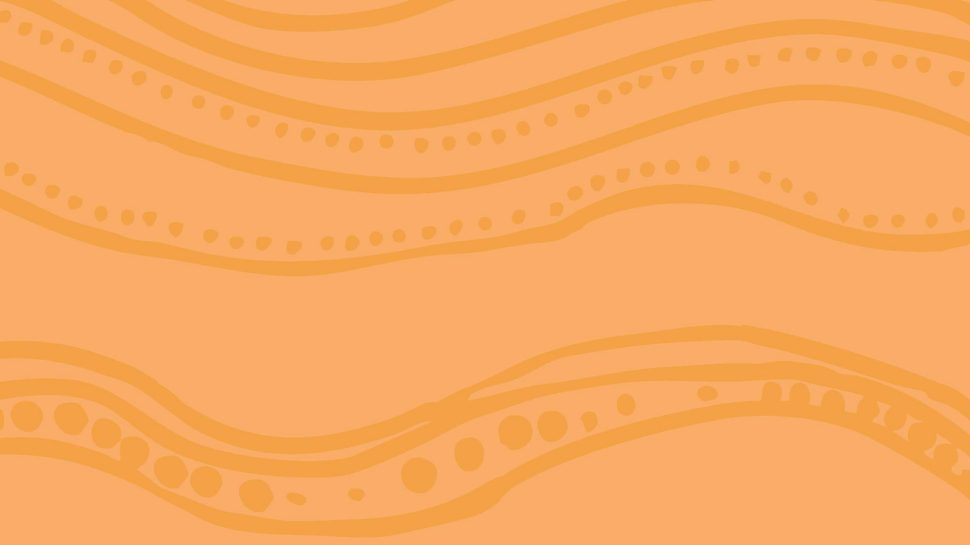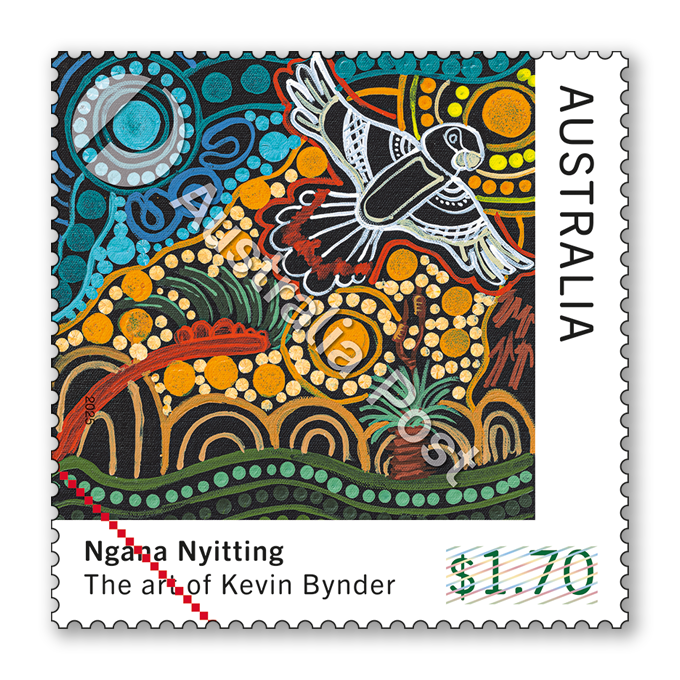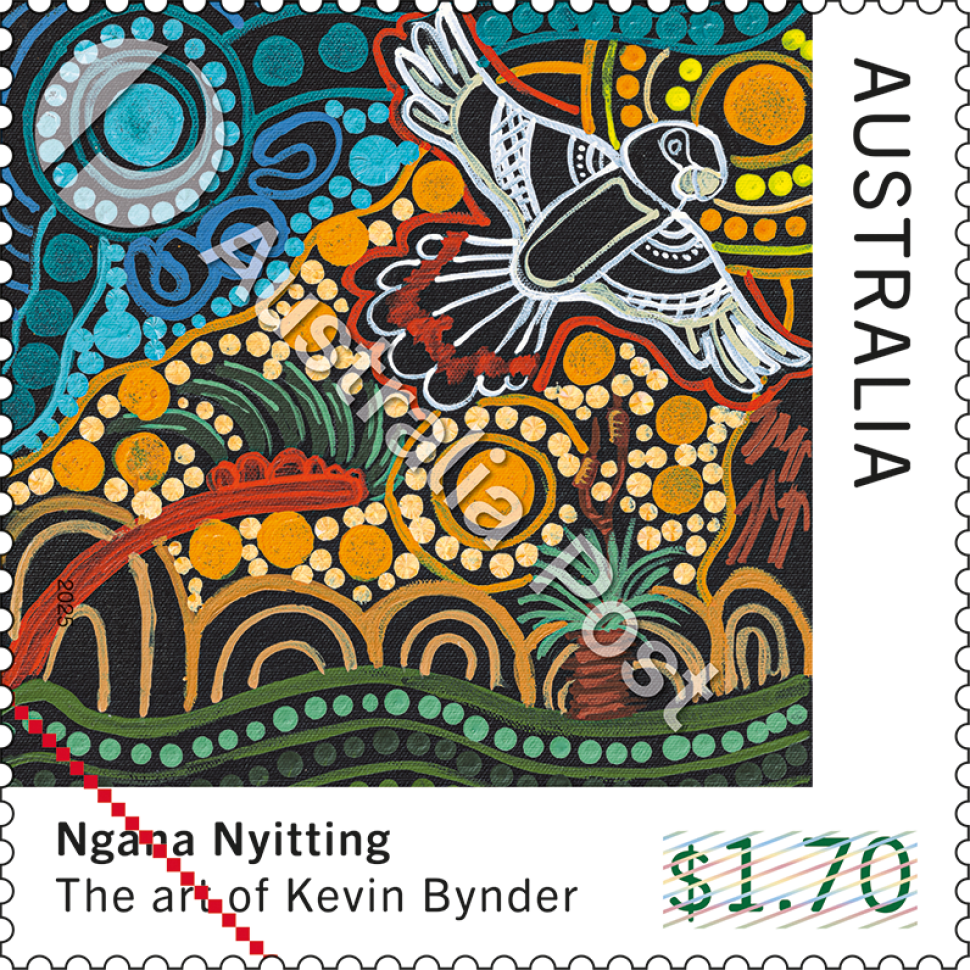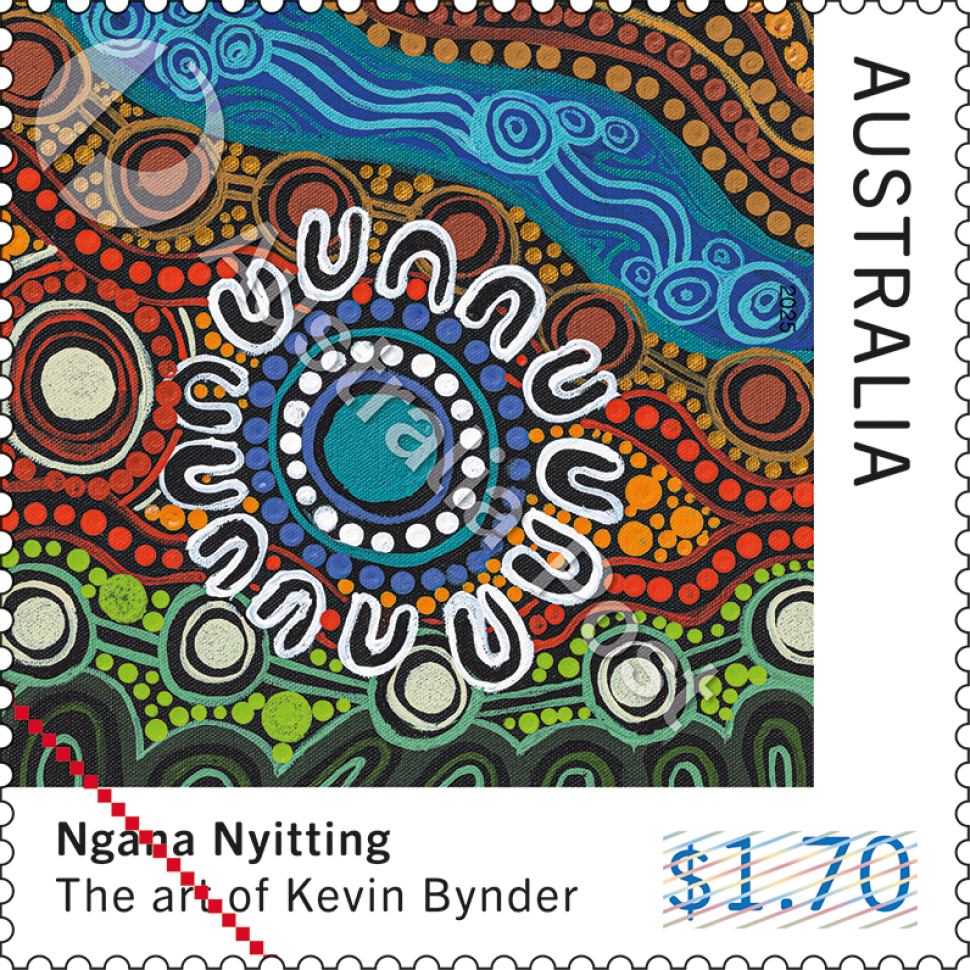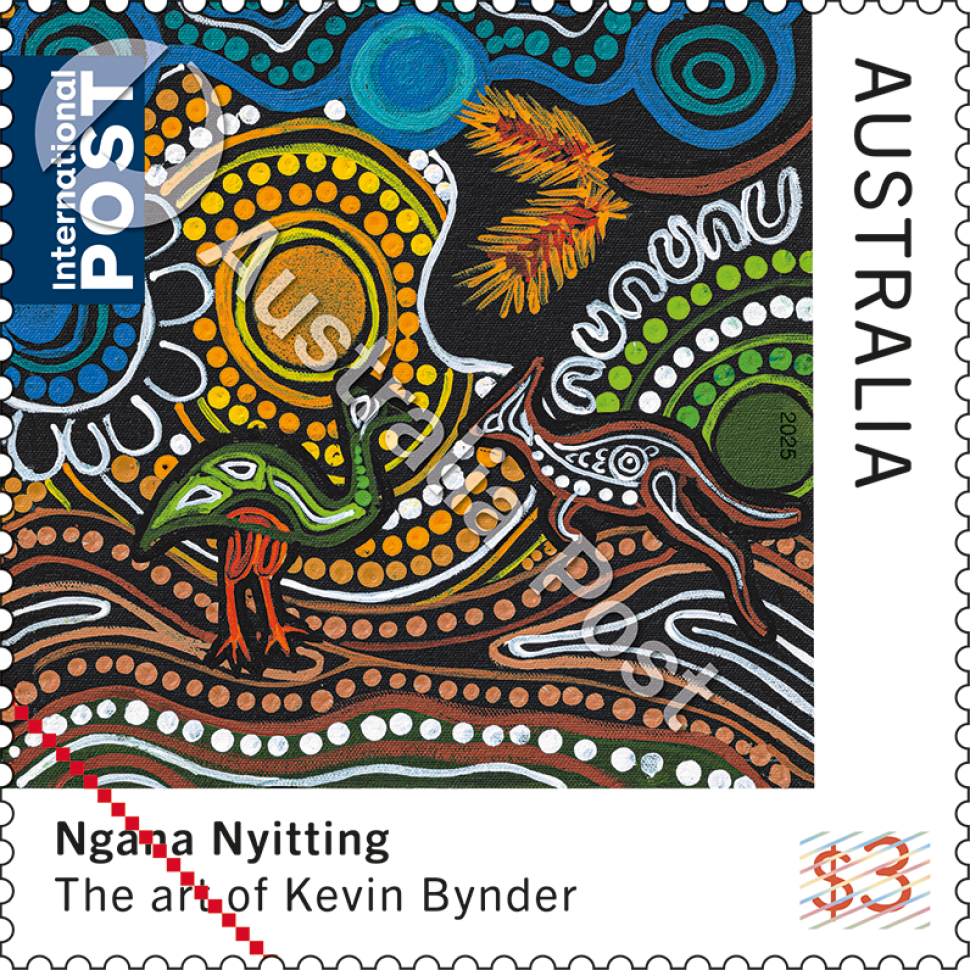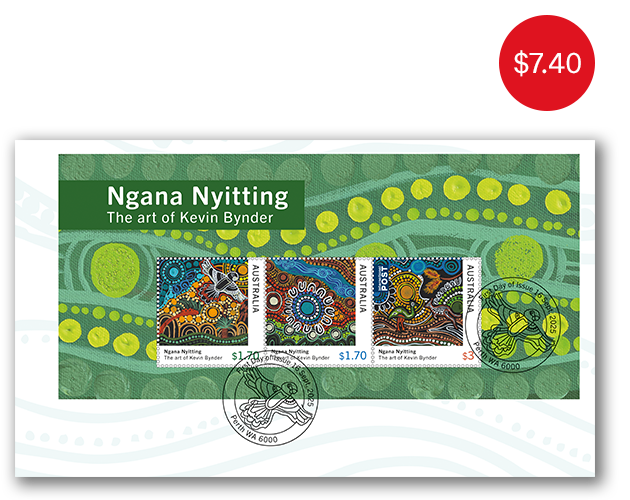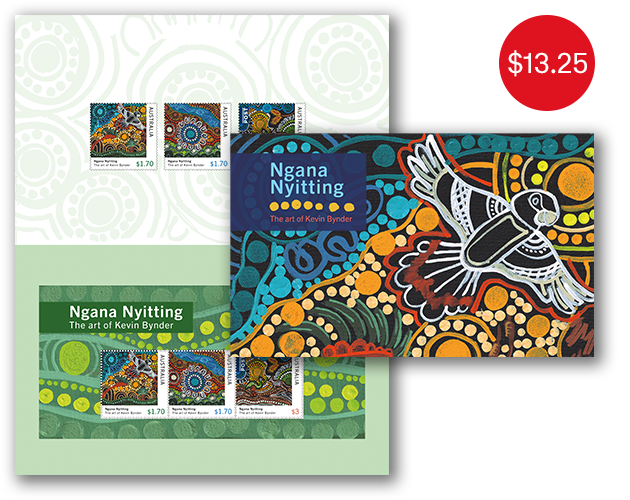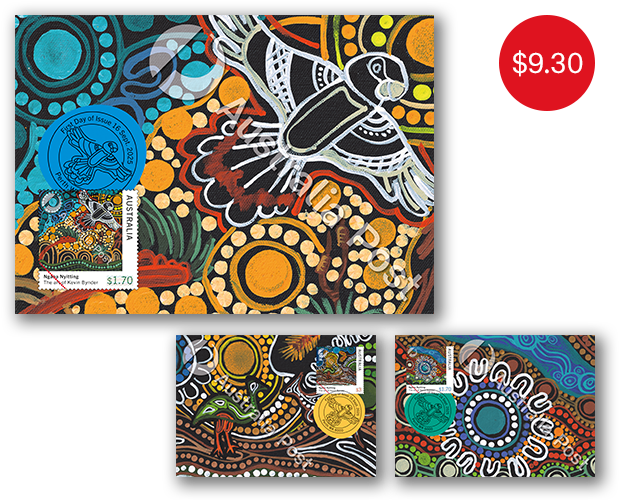Overview
This issue is the second in a series showcasing the work of Indigenous artists and designers around Australia. The first, issued in 2024, featured the art of Chern’ee Sutton, a proud Kalkadoon woman from the Mount Isa region. This year’s stamps are the work of respected Western Australian painter and designer Kevin Bynder. Bynder was born in 1975 in Boorloo/Perth to a Whadjuk-Yued Nyungar mother and a Widi-Badimia Yamatji father.
The stamp imagery is based on the ancestral lands, totems and culture of Bynder’s maternal and paternal grandparents. Their Country includes the Perth region, Western Australia’s mid-west and the region north of Perth. Ngana Nyitting means “My Dreaming” in the Yamatji (Ngana) and Nyungar (Nyitting) languages.
Bynder began painting at the age of 23, first in Fitzroy Crossing and then in Broome, where he had his first studio. Since then, he has established a successful national and international career from his merchandise company and art studio at Wangara, a suburb in Perth’s north. His many commissioned designs and artworks include commemorative coins for the Perth Mint, Indigenous jumpers for the AFL and NBL Perth Wildcats, murals and works on canvas.
The text in italics is by Kevin Bynder.
Technical specifications
- Issue date
- 16 September 2025
- Issue withdrawal date
- 1 April 2026
- Denomination
- 2 x $1.70, 1 x $3
- Stamp & product design
- Jo Muré, Australia Post Design Studio
- Illustration
- Kevin Bynder
- Paper
- Tullis Russell 104gsm Red Phosphor/Blue PVA Stamp Paper & PSA (P55) 100gsm Release Self/Adhesive
- Printer
- RA Printing
- Printing process
- Offset lithography
- Stamp size (mm)
- 35 x 35
- Minisheet size (mm)
- 170 x 80
- Perforations
- 14.28 x 14.28
- Sheet layout
- Module of 50 (2 x 25)
- FDI postmark
- Perth, WA 6000
- FDI withdrawal date
- 15 October 2025
$1.70
Whadjuk Country
Whadjuk Boodja (Country) is situated within Nyungar Country of Boorloo (Perth). Whadjuk is one of 14 Nyungar tribes of south-west Western Australia. My maternal grandfather was born near the banks of the Derbal Yerrigan (Swan River) in a place called Success Hill.
The first stamp shows parts of Whadjuk Country. The Karak (black cockatoo) can be seen when rain is coming, and the Balga (grass tree) is plentiful around Whadjuk Country.
The Balga stump is good for lighting fires; the resin is very flammable and can also be used to hold objects together like tools and weapons.
The Nollamarra or Kurulbrang is the kangaroo paw, used as a medicine.
The hills are the Kaart-Morda (Darling Range), said to be the body of the Waagyl.
After she created the land, she lay dormant and resting in the Dreamtime.
$1.70
Yamatji Country
My grandparents on my father’s side were born in the Yamatji Region in the mid-west of Western Australia. My Nana is an Amangu Yamatji and my Pop is a Badimia Yamatji.
This stamp shows their Barna (Country), from the blue waterways of the Greenough River to the hills of Mount Magnet.
The circles joining a pathway are the songlines. The songlines are the history taught to our younger generation through songs when walking the land. The large circle represents the Yamatji Region and the U symbols our elders.
$3
Yued Country
The Boodja (Country) of the Yued people is located 250 kilometres north of Boorloo/Perth and north-east of Balladong Boodja. The town of Moora is where my maternal Nana is from. She was born amongst the trees near a settlement called Walebing.
The third stamp shows my Nana’s Country. The Yonga (kangaroo) and Weitj (emu) are a major source of traditional food which my ancestors would hunt.
The bottlebrush tree was used as medicine and its sweet nectar was a source of food.
Also shown are the waterways, which were made by our creator, Waagyl (the Rainbow Serpent), and at the centre is the Ngaangk (sun), our giver of life.
The Mardaa (ochre), used for paint in ceremonies, can be seen at the bottom.
Shop our Stamp Collectables
Shop our Stamp Collectables
This content was produced at the time of the stamp issue release date and will not be updated.
